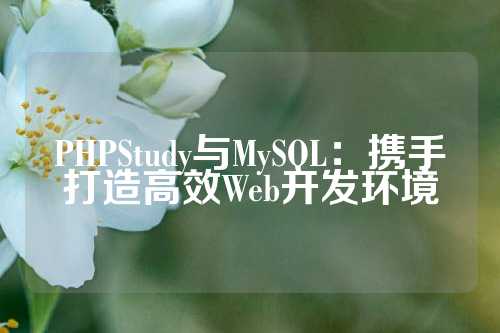用PHP打造移动应用后端:从API开发到数据库管理的全方位指南
PHP是一种广泛用于Web开发的编程语言,尤其适用于开发动态网站和Web应用程序。然而,随着技术的发展,PHP也被用于开发移动应用程序的后端服务。虽然PHP本身并不是一个用于开发移动应用前端的工具,但它可以与各种前端技术(如React Native、Flutter等)结合使用,为移动应用提供强大的后端支持。
PHP在移动应用开发中的角色
-
API开发:PHP可以用来开发RESTful API,这些API可以为移动应用提供数据和服务。通过API,移动应用可以与服务器进行通信,获取或提交数据。

-
推送通知:PHP可以与第三方服务(如Firebase Cloud Messaging)集成,实现向移动设备发送推送通知的功能。
案例:使用PHP开发一个简单的移动应用后端
假设我们要开发一个简单的移动应用,用户可以在应用中注册、登录,并查看和发布帖子。我们将使用PHP来开发后端API,并使用React Native来开发前端。
1. 数据库设计
首先,我们需要设计数据库来存储用户信息和帖子信息。
CREATE TABLE users (
id INT AUTO_INCREMENT PRIMARY KEY,
username VARCHAR(50) NOT NULL,
password VARCHAR(255) NOT NULL,
email VARCHAR(100) NOT NULL
);
CREATE TABLE posts (
id INT AUTO_INCREMENT PRIMARY KEY,
user_id INT NOT NULL,
content TEXT NOT NULL,
created_at TIMESTAMP DEFAULT CURRENT_TIMESTAMP,
FOREIGN KEY (user_id) REFERENCES users(id)
);
2. 用户注册API
<?php
header("Content-Type: application/json");
$data = json_decode(file_get_contents("php://input"), true);
$username = $data['username'];
$password = password_hash($data['password'], PASSWORD_BCRYPT);
$email = $data['email'];
$conn = new mysqli("localhost", "root", "", "app_db");
if ($conn->connect_error) {
die("Connection failed: " . $conn->connect_error);
}
$stmt = $conn->prepare("INSERT INTO users (username, password, email) VALUES (?, ?, ?)");
$stmt->bind_param("sss", $username, $password, $email);
if ($stmt->execute()) {
echo json_encode(["status" => "success", "message" => "User registered successfully"]);
} else {
echo json_encode(["status" => "error", "message" => "Error registering user"]);
}
$stmt->close();
$conn->close();
?>
3. 用户登录API
<?php
header("Content-Type: application/json");
$data = json_decode(file_get_contents("php://input"), true);
$username = $data['username'];
$password = $data['password'];
$conn = new mysqli("localhost", "root", "", "app_db");
if ($conn->connect_error) {
die("Connection failed: " . $conn->connect_error);
}
$stmt = $conn->prepare("SELECT id, password FROM users WHERE username = ?");
$stmt->bind_param("s", $username);
$stmt->execute();
$stmt->store_result();
$stmt->bind_result($id, $hashed_password);
if ($stmt->fetch() && password_verify($password, $hashed_password)) {
echo json_encode(["status" => "success", "message" => "Login successful", "user_id" => $id]);
} else {
echo json_encode(["status" => "error", "message" => "Invalid username or password"]);
}
$stmt->close();
$conn->close();
?>
4. 发布帖子API
<?php
header("Content-Type: application/json");
$data = json_decode(file_get_contents("php://input"), true);
$user_id = $data['user_id'];
$content = $data['content'];
$conn = new mysqli("localhost", "root", "", "app_db");
if ($conn->connect_error) {
die("Connection failed: " . $conn->connect_error);
}
$stmt = $conn->prepare("INSERT INTO posts (user_id, content) VALUES (?, ?)");
$stmt->bind_param("is", $user_id, $content);
if ($stmt->execute()) {
echo json_encode(["status" => "success", "message" => "Post created successfully"]);
} else {
echo json_encode(["status" => "error", "message" => "Error creating post"]);
}
$stmt->close();
$conn->close();
?>
5. 获取帖子API
<?php
header("Content-Type: application/json");
$conn = new mysqli("localhost", "root", "", "app_db");
if ($conn->connect_error) {
die("Connection failed: " . $conn->connect_error);
}
$result = $conn->query("SELECT posts.id, posts.content, posts.created_at, users.username
FROM posts
JOIN users ON posts.user_id = users.id
ORDER BY posts.created_at DESC");
$posts = [];
if ($result->num_rows > 0) {
while ($row = $result->fetch_assoc()) {
$posts[] = $row;
}
}
echo json_encode(["status" => "success", "posts" => $posts]);
$conn->close();
?>
总结
通过上述案例,我们可以看到PHP在移动应用开发中的强大功能。虽然PHP本身不用于开发移动应用的前端,但它可以为移动应用提供稳定、高效的后端支持。通过与前端技术的结合,PHP可以帮助开发者构建功能丰富的移动应用。





